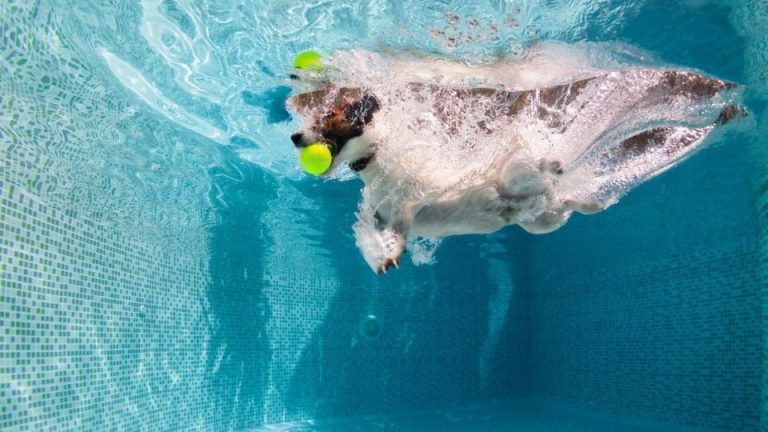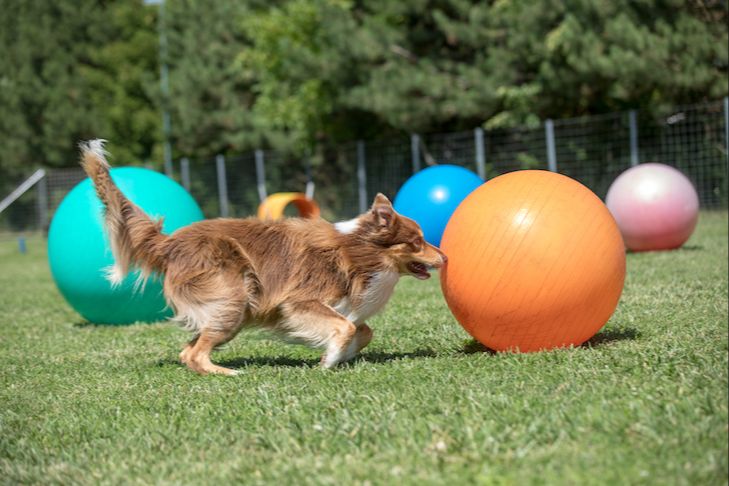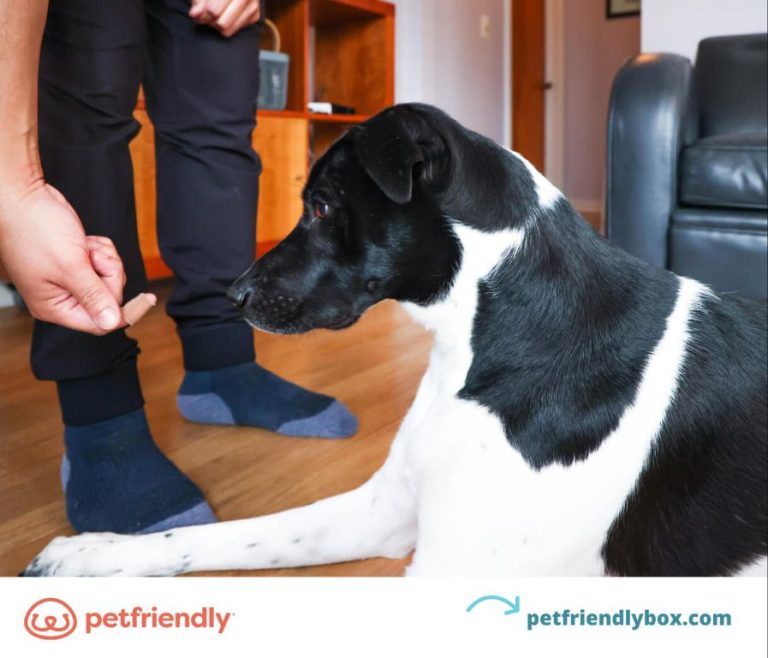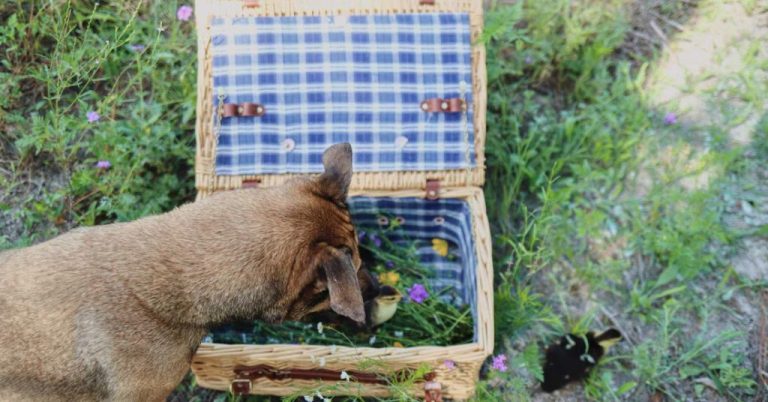Scent Games: Enhance Your Dog’S Natural Skills
Scent games are a great way to provide mental stimulation and enrichment for dogs. They take advantage of a dog’s incredible sense of smell, which is estimated to be anywhere from 10,000 to 100,000 times more acute than a human’s. Dogs have hundreds of millions more scent receptors in their noses than humans do. This allows them to perceive a complex world of smells that we can’t even imagine.
Scent games tap into your dog’s natural instincts and abilities. Dogs are hunting animals, so finding and following scents comes naturally to them. Scent games provide an outlet for their tracking and hunting drives in a fun, engaging way. They allow dogs to use both their body and their mind as they search, problem-solve, and hunt for smells.
Regular scent games and nosework can provide many benefits for dogs. Scent games have been shown to improve cognitive function, increase confidence, reduce stress and anxiety, and strengthen the bond between dog and owner. They provide mental stimulation to keep dogs engaged and focused. Scent games are great for high-energy dogs or dogs with behavior issues who need an outlet for their energy and instincts.
This article will explore the science behind scent for dogs, provide guidance on getting started with scent games, and suggest specific scent game ideas to enhance your dog’s natural abilities. Scent games are a fun way to engage your dog’s nose, mind, and body for a more fulfilled pup.
The Science Behind Scent
A dog’s sense of smell is their superpower. Dogs have up to 300 million olfactory receptors in their noses, compared to only about 6 million in humans (PopSci, 2023). This gives dogs an incredibly powerful sense of smell that allows them to experience the world in a way humans cannot comprehend.
For dogs, smelling is like seeing. A dog’s sense of smell provides mental stimulation and enrichment, allows them to gather information about their environment, and is key to their ability to track and hunt. Smell also plays a huge role in how dogs interact socially, recognizing other animals and establishing social hierarchies (PetResort, n.d.).
When dogs sniff, air enters the nose and is routed into two different chambers. One chamber handles respiration and directs air down into the lungs. The other chamber is dedicated to olfaction and is lined with those hundreds of millions of scent receptors. As air moves over the receptors, scents bind to them, sending nerve signals to the brain that trigger identification and emotional responses (PetResort, n.d.).
Because of their incredible sense of smell, dogs can detect the faintest odors from incredibly minute concentrations of airborne molecules. Dogs are capable of differentiating scents even when the concentration is less than one part per trillion! (UrbanPetHospital, 2023).
Types of Scent Games
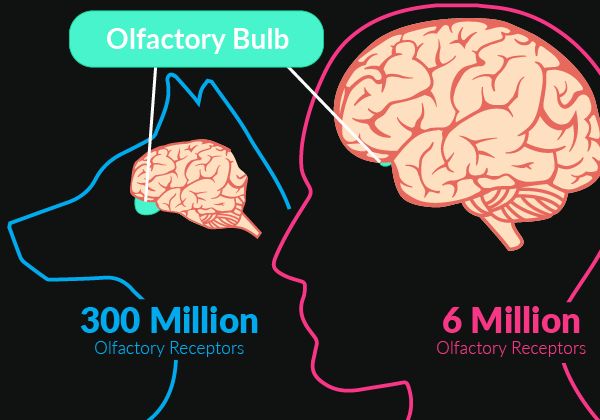
There are several types of scent games that you can play with your dog to engage their natural sniffing skills. Some popular options include:
Nosework Games
Nosework games involve hiding treats or scents around an area and having your dog sniff them out. You can start easy by hiding treats under cups or in boxes, and then progress to more challenging hides. Official nosework trials hide scents like birch, anise, and clove in containers or taped to surfaces.
Hide and Seek
With hide and seek, one person hides while the dog stays with another handler. Then the dog is brought in to find the hidden person. Start with obvious hiding spots and then get more difficult over time. Give high-value treats when your dog locates the person.
Trailing Games
For trailing games, you lay a scented trail with treats or a toy and have your dog follow the scent to find the reward. Make simple straight trails at first, then add curves, loops, intersections, etc. Length can range from 10-20 feet indoors up to a quarter mile or more outside.
Getting Started with Scent Games
Scent games are a fun way to engage your dog’s natural abilities, but it’s important to start the training process correctly. Here are some tips for getting started with scent games:
Choose a low distraction area to start. This could be a quiet room in your home or an enclosed yard. Too many competing smells will make it hard for your dog to focus at first (1).
Use high-value rewards like small pieces of chicken, cheese or hot dogs when first teaching scent games. This will keep your dog motivated to use his nose! You can phase to lower value rewards over time.
Start with easy hides to build confidence. For example, put treats under only a couple cups to start, with the scented one much closer to your dog (2). Increase difficulty slowly over multiple sessions.
Keep training sessions short, around 5 minutes for puppies or dogs new to scentwork. It requires a lot of mental focus for dogs, so don’t overload them (3).
Make sure your dog is hungry enough to want to use their nose and search. Feeding them 1-2 hours before a session is ideal for motivation.
Use scents your dog is very familiar with already, like their own toys or treats. Novel scents can be introduced later after your dog understands the game.
Have fun! The best way to build your dog’s skills is by making it a rewarding game for both of you.
Hide and Seek
One of the simplest scent games you can play with your dog is a game of hide and seek. This helps engage their natural tracking and hunting instincts in a fun way. Here are some tips for playing hide and seek with your dog:
Start by hiding treats and toys around the house or yard. Make sure to start with easy spots at first like under a blanket or behind a chair. Say “find it!” and see if your dog can locate the hidden item using their nose. Increase the difficulty over time by hiding treats in more complex spots.[1]
You can also play a reverse version by having your dog wait in one room while you go hide in another part of the house. Call your dog to come find you and reward with praise and treats when they do. This taps into their natural pack mentality.
For a greater challenge, have family members take turns hiding from your dog. This makes the game more dynamic and builds their scenting skills. Just make sure to have tasty treats on hand for when your dog successfully finds the person.
As your dog gets better at the hide and seek, up the ante by hiding treats under cups and having your dog identify the correct cup just using scent. You can also increase the search area over time.
The key is keeping the game fun and rewarding for your dog. Mix up hiding spots and people, and always celebrate when your pooch finds what they are seeking!
1. https://www.gonedogmad.com/dog-hide-and-seek/
Nosework Games
Nosework games are a great way to engage your dog’s powerful sense of smell. These games allow your pup to use their natural scavenging and tracking instincts in a fun, mental exercise. Nosework games are easy to set up at home and provide an enriching activity for energetic dogs.
Essential oils like birch, anise, clove, and cypress make great scents for nosework games. Put a few drops of oil on a cotton ball or piece of felt and hide it around the house. As your dog learns to identify the scent, start hiding it in boxes, envelopes, and jars to increase the challenge. Always keep safety in mind and monitor your dog during scent games.
You can create patterns and start placing the scented items in sequence for your dog to find. Start with simple patterns and increase the complexity as your dog progresses. Place numerals or symbols near the scented items to indicate the pattern. This activates your dog’s problem-solving skills!
Rotate through different scents to keep your dog’s nose sharp. Containers like cardboard boxes, paper bags, plastic bottles, and tennis balls can hold the scented items. Get creative with hiding places like under pillows, in shoes, or tangled in a blanket. Nosework is a great rainy day activity for dogs of all ages!
Trailing Games
Trailing games involve your dog using their powerful sense of smell to follow a human scent trail and locate the person hiding somewhere along the trail. This taps into your dog’s natural tracking instincts in a fun way.
To set up a basic trailing game:
- Have someone walk a short trail, dropping a couple personal items like a sock or hat along the way.
- Let your dog smell one of the items to pick up the person’s scent.
- Encourage your dog to find the trail and follow it, praising them along the way.
- When they locate the person, reward with treats and praise.
You can make the game more challenging over time by using longer trails, older scents, and more complex routes. Always keep sessions short and upbeat. Trailing taps into your dog’s natural tracking abilities and satisfies their scent drive.
Advanced Scent Games
Once your dog has mastered the basics of scent games, you can challenge them with more complex searches. Advanced scent games build on your dog’s natural abilities and keep them mentally stimulated. Here are some examples of advanced scent games to try:
Complex Searches
Hide several scents in a large area and ask your dog to find them one at a time. For example, hide 5 different scented objects in your backyard and give your dog the cue to find them. Start with showing them the first scent, then ask them to locate it. Reward them when they discover it. Repeat for the remaining scents.
To increase difficulty, use containers with lid openings just large enough for your dog’s nose. They will need to sniff out the containers with the target odor. You can also increase the search area over time.
Obstacle Courses
Set up a challenging obstacle course in your home or yard. Direct your dog to complete each obstacle before finding the next scent cue. Obstacles can include tunnels, stairs, ramps, crawling, jumping over low hurdles, weaving between poles, and more. Get creative!
Place scented objects at each station for your dog to locate. Give them an extra special reward when they complete the whole course.
Scent Puzzles
Scent puzzles require dogs to problem solve using their nose. For example, place treats or a favorite toy under plastic cups arranged in a pattern. Let your dog figure out how to lift the cups to reveal the scent beneath. Start with just a few cups and work up to more complex patterns.
You can also hide scents inside puzzle feeders or toys. As your dog manipulates the toy with their paws and nose, kibble or treats are released when scents are uncovered. This enhances mental stimulation.
Advanced scent games build confidence, focus, and bonding between you and your dog. And most importantly, they’re fun! With creativity and patience, the possibilities are endless.
Troubleshooting
Scent games are a great way to engage your dog’s mind, but they can lose interest quickly if the games become too easy or repetitive. Here are some tips for troubleshooting common issues with scent games and keeping your dog motivated:
If your dog seems bored with a scent game, try increasing the difficulty by hiding the target scent in harder-to-reach spots or using smaller amounts of scent. You can also increase the challenge by adding multiple scent targets, or hiding toys and treats instead of just treats. Rotating through different types of games can help prevent boredom from repetition.
Another way to keep scent games interesting is to use novel scents. Collect unusual smelling items like spices, herbs, essential oils, or even wildlife scents to pique your dog’s curiosity. Introduce the new scents gradually at first to avoid overwhelming your dog.
It’s important to end scent games on a positive note, rather than dragging them out until your dog loses interest. Keep training sessions short, 10-15 minutes, and quit while your dog is still eager to play. Providing lots of praise and rewards throughout will help keep your dog engaged and motivated to continue.
If your dog seems frustrated with a scent game, it may be too difficult. Take a step back to make sure your dog has the foundations down before moving on to more advanced challenges. Breaking the game down into smaller steps can help your dog build confidence and skills.
Make sure scent games remain a positive experience for your dog. If needed, revisit easier games your dog enjoyed previously until their motivation increases again. Keeping training sessions fun and rewarding will ensure scent work remains an enriching activity.
Conclusion
In summary, scent games provide a wide range of benefits for dogs. They engage a dog’s powerful sense of smell and provide mental stimulation. Scent games have been shown to improve cognitive function, reduce anxiety and boredom, and strengthen the bond between owner and dog.
When getting started with scent games, begin with basic hide and seek games in easy environments before working up to more complex nosework and trailing games. Always keep training sessions short, positive and rewarding. Be patient as your dog learns to use his nose during these games.
With some creativity and patience, scent games can be integrated into any lifestyle to provide dogs with much needed enrichment. An engaged, mentally stimulated dog is a happy, well-behaved dog. Scent games are a win-win activity for owners and dogs alike.

